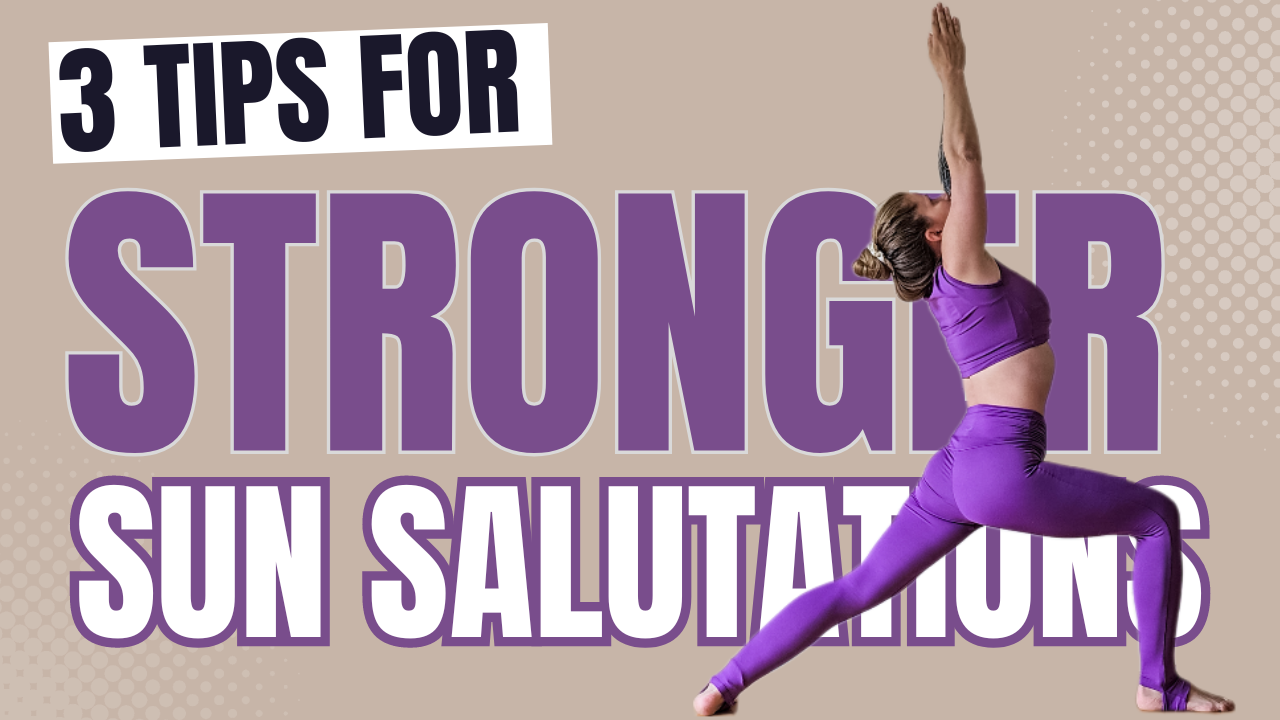3 Steps For Stronger Sun Salutations
3 Steps for Stronger Sun Salutations
Surya (sun) Namaskar (salutation), is a fundamental and arguably the most important part of our asana practice in Ashtanga Yoga. They serve three key purposes: warming up the body, connecting breath with movement, and setting the tone for the rest of our practice.
Regardless of how long you've been practicing or which series you're working on, every practice begins with a minimum of 5 Surya Namaskar A and 3 Surya Namaskar B. Because of their frequency in practice, it's essential to develop proper technique. This will help you build strength and flexibility while avoiding injury.
In this article, we’ll cover:
The role of bandhas and core strength in improving Sun Salutations.
How engaging energy locks (bandhas) and moving from the core will enhance stability, balance, and fluidity.
The importance of correct movement patterns and alignment to prevent injury and gain greater control over both body and mind.
3 Steps to Build a Stronger Sun Salutation
1. Move with Control, Not Momentum
A common mistake new students make when moving into Ekam (both A & B) and Virabhadrasana in Surya Namaskar B, is swinging their arms behind the body, relying on momentum to initiate the movement. This doesn't build strength and it encourages shortcuts rather than proper engagement.
Instead, challenge yourself to keep your arms in front of your body as you lift them. Engage your core and pelvic floor to support the movement. Training your body to move intentionally and with control will build strength, not just in Sun Salutations but throughout your entire practice.
2. Press Through Flat Palms
Another common shortcut is lifting the palms off the floor in Uttanasana (Trini). This deactivates your core, leading to a loss of connection when jumping back into Chaturanga.
Ideally, once your hands are placed flat on the mat in Dve for Sun Salutation A, they shouldn’t move until you rise up again at Nava. For Sun Salutation B, the hands should only move to enter and exit Virabhadrasana.
By practicing this way, you begin to connect the action of pressing into the floor to acivate the engagement of your pelvic floor and core muscles. This foundational movement is key to learning how to "float" forward and back in your transitions.
3. Transition Using Your Core
The transition from Urdhva Mukha Svanasana (Upward-Facing Dog) to Adho Mukha Svanasana (Downward-Facing Dog) is one we do countless times in our practice. If you often step in with your hands or feet, you’re not alone. But, with the proper technique, you can find the correct position while also building strength.
This transition, repeated daily over months and years, can create imbalances if done incorrectly. For example, you might always step forward with the same foot first when landing in downward dog, which can lead to misalignments in the hips or shoulders over time. Here's how to transition smoothly:
From Upward Dog, keep the tops of your feet on the ground and press into your palms to lift your hips using core activation.
As your hips rise, use your core and pelvic floor to pull the tops of your feet toward your hands.
When your body forms an inverted V, press your hips back and simultaneously flip over your feet to come into Downward Dog. If you’re too close or far apart, check your alignment Chaturanga to ensure your hands and feet are properly spaced.
Strengthening Your Practice Over Time
Building strength and mastery in Sun Salutations is a gradual process. Be patient with yourself and remember that progress comes with consistency. Regular practice using these techniques will develop the core strength and overall body control necessary for fluid, effortless movements.
Join My Online Shala for Support
I’m excited to now offer four online group classes per week as part of my new program, Ashtanga Bala. This is an excellent opportunity to receive personalized feedback, engage with a supportive community, and experience the convenience of practicing from anywhere. All experience levels are welcome!
Commit to your practice and join Ashtanga Bala to see the positive effects that daily discipline can bring to your yoga practice—and your life.
